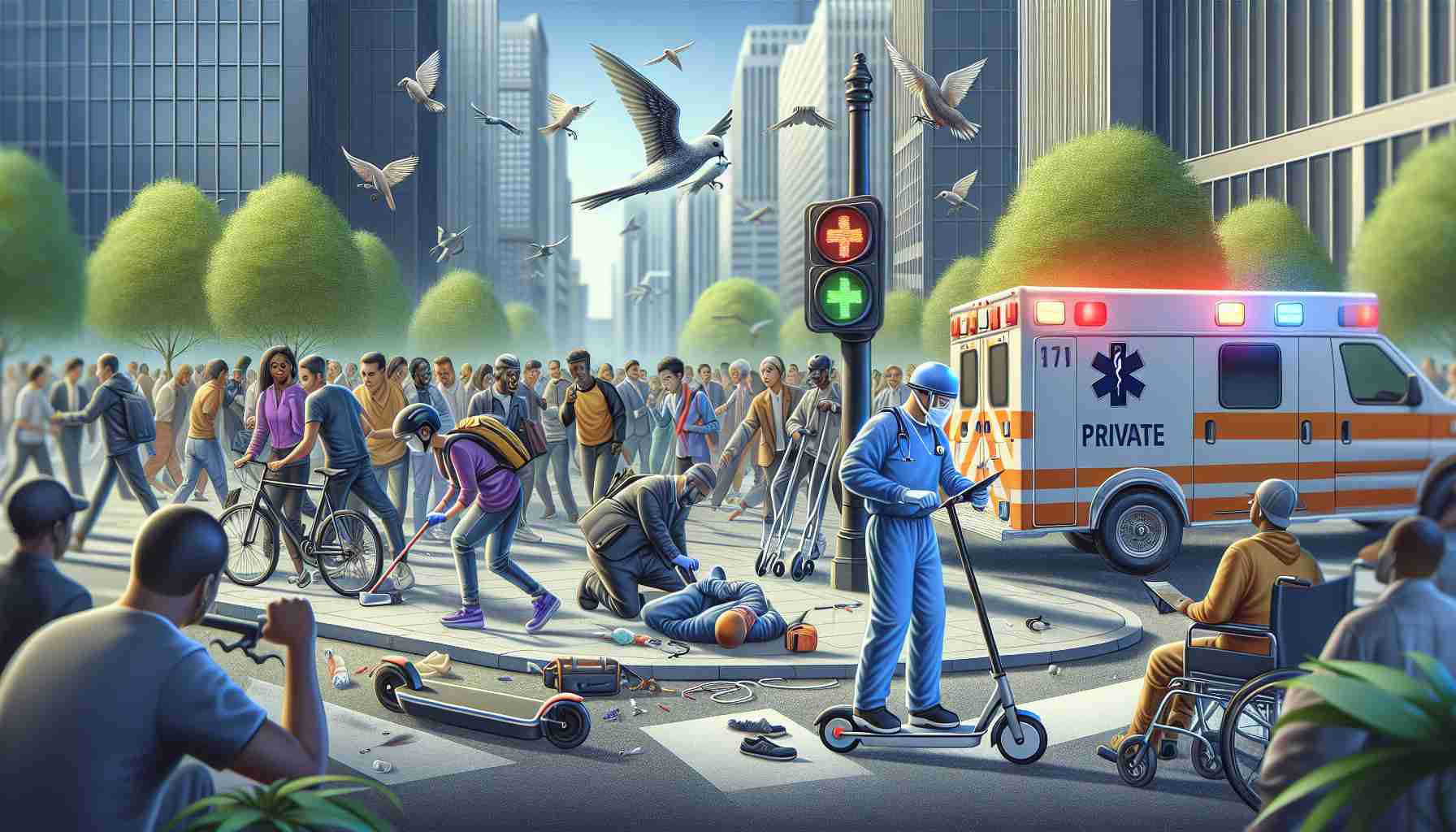Recent findings from Columbia University have revealed a dramatic increase in injuries related to micro-mobility devices in the United States, including bicycles and electric scooters. Notably, injuries related to e-bikes have seen an astounding increase of 293%, while injuries from electric scooters rose by 88%. With a growing prevalence of these devices, the need for improved safety measures has become critical.
The rise in popularity of e-bikes has eclipsed that of electric cars, with sales outpacing them by 269% due to their affordability and ease of use. Despite providing a convenient mode of transport, the study analyzed over 1.9 million injury cases reported from 2019 to 2022, revealing that bicycles were the leading cause of injuries, followed by powered scooters, hoverboards, and e-bikes.
Particularly concerning is the statistic that over 75% of hoverboard injuries involved individuals under 18. Factors contributing to these accidents include the influence of alcohol, especially for scooter and e-bike users. Additionally, it was noted that helmet usage varies significantly, being most prevalent among cyclists compared to hoverboard users, who often experience concussions when injuries occur.
Researchers have emphasized the importance of implementing legislation to regulate these devices effectively. Suggested safety measures for users include wearing helmets, being aware of surroundings, and following manufacturer guidelines. By addressing these issues proactively, cities can work towards making micro-mobility a safer alternative for transportation.
Staying Safe While Riding: Essential Tips and Life Hacks for Micro-Mobility Users
As micro-mobility devices like e-bikes and electric scooters continue to gain popularity, safety has become a pressing concern due to the significant rise in related injuries. If you’re among the many who enjoy the convenience of these modern transport options, here are tips, life hacks, and interesting facts to keep you safe and informed.
1. Prioritize Helmet Use
Wearing a helmet is a simple yet effective way to protect yourself from head injuries. Many injuries, especially among hoverboard users, involve concussions that could be mitigated with proper headgear. Invest in a quality helmet that fits well and is certified for safety.
2. Stay Sober and Alert
Alcohol can significantly impair your ability to ride safely. It’s crucial to remain sober when using e-bikes or scooters. Make it a rule to avoid any intoxication before hitting the road to decrease the risk of accidents.
3. Understand Your Device
Familiarize yourself with the specific features and limitations of your e-bike or scooter. Read the manufacturer’s guidelines to fully understand how to operate your device safely. This knowledge can make a critical difference in an emergency situation.
4. Choose Safe Routes
Whenever possible, opt for bike lanes or less-trafficked areas to reduce your risk of accidents. Planning your route in advance can help you avoid busy streets and hazards.
5. Inspect Your Device Regularly
Regular maintenance checks can prevent mechanical failures that lead to injuries. Ensure brakes, tires, and other components are functioning properly before each ride.
6. Use Your Signals
Just like cars, you should signal when changing direction. This helps communicate your intentions to other road users, making the environment safer for everyone.
7. Enroll in Safety Classes
Consider taking a safety class designed specifically for e-bike or scooter riders. These classes often cover best practices, accident avoidance strategies, and proper riding techniques.
Interesting Fact: Did you know that e-bike sales have surpassed electric car sales by an astonishing 269%? This trend underscores the increasing preference for two-wheeled electric transport due to its affordability and convenience.
8. Encourage Younger Riders to Practice
With hoverboard injuries predominantly affecting those under 18, it’s vital to ensure that younger riders receive proper training. Encourage them to practice skills in a safe, open area before venturing out into traffic.
9. Utilize Tech for Safety
Many e-bikes and scooters come equipped with safety features like lights and horns. Use these features to your advantage. If your device has a Bluetooth-enabled app, explore safety options such as alerts and route tracking.
10. Regulatory Support
Advocate for local regulations to improve micro-mobility safety measures. Supporting legislation that promotes responsible riding and device safety can lead to better infrastructures and practices in your community.
By following these tips and being proactive about your safety, you can enjoy the benefits of micro-mobility without compromising your well-being. For more information on micro-mobility and safety initiatives, visit National Highway Traffic Safety Administration for guidelines and resources.






















